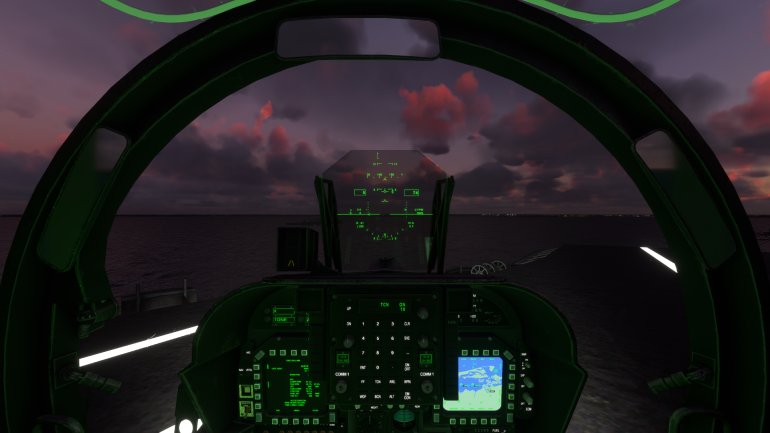AD

Microsoft Flight Simulator’s virtual world has always been dominated by civilian and commercial aircraft. The allure and challenges that come with true-to-life flight dynamics and various avionics of our favorite civilian airplanes have become an intoxicating hobby for flight simmers around the world. However, there are times when you just feel like flying something different. Something, that really isn’t the status quo of what a typical aircraft should be. Something that can provide some fun mixed with a new challenge.
I present to you the AV-8B Harrier II by DC Designs. With its vertical takeoff and landing ability this modern marvel from the cold war era rewrote the rule book and what a modern military aircraft can do. Now you can see what it’s like to master this balancing act between flight and sudden death.
Three versions of the Harrier come with this download. The Royal Air Force GR9, U.S. Marine Corps AV-8B and AV-8B Plus. The external models and liveries look great with all wing moving surfaces, air brake, opening canopy, and even an extending aerial refueling probe. You also have the option to attach external fuel tanks and weapons. External lighting looks good as well as vapor effects when pulling high G’s. So far everything looks great!
The cockpit looks good as well with two multifunction displays, a working HUD, and various steam gauges. However, this is not a study-level aircraft. Only a handful of functions are available when using the MFDs and a few non clickable switches are scattered about. This might be a turnoff for hardcore flight simmers. But DC Designs has stated that it’s “intended to be as accurate in terms of aerodynamics as we can make them in MSFS.” So, flight dynamics are real. Aircraft systems are kind of real. Got It!

So how does it fly? Quite nicely actually. You’ll first notice the whine of that Pegasus engine once you apply power. It’s personally my favorite thing about this plane. Takeoff is very quick!

Under normal rollout with the exhaust nozzles at 30 degrees. Getting up to altitude seems effortless and maneuvering is quick and responsive. I was surprised however by how touchy it is to land this plane normally. I soon found out that applying full flaps and going 150kts or lower would make the Harrier bank right and nosedive into the ground. Sorry Taxpayers. Vertical takeoff to me came surprisingly easy. At 21,000 lbs. or lower is when VTOL can be achieved. Slowly applying power, the Harrier leaps into the air with ease while making small corrections to maintain stability. I notice that it acted a lot like a helicopter. Makes sense. Once airborne, slowly moves the nozzles out of the 90-degree angle in small increments until you reach 200kts. Now you’re an airplane again! VTOL landings are so fun and challenging. The manual says to move the nozzles to 45 degrees to slow the aircraft. Then to 90 degrees at 110kts to transition into the hover phase. This works well but what you need to do is just practice and get the feel of the aircraft. It is so satisfying once you stick to that first landing.




The DC Designs Harrier II hits the mark when it comes to delivering a challenge without the intimidation that comes with a study-level aircraft. I have had a blast taking off and landing in so many places that were NOT an airport. I’ve thoroughly enjoyed it and hopefully, you will too.

Regan.
AD


















